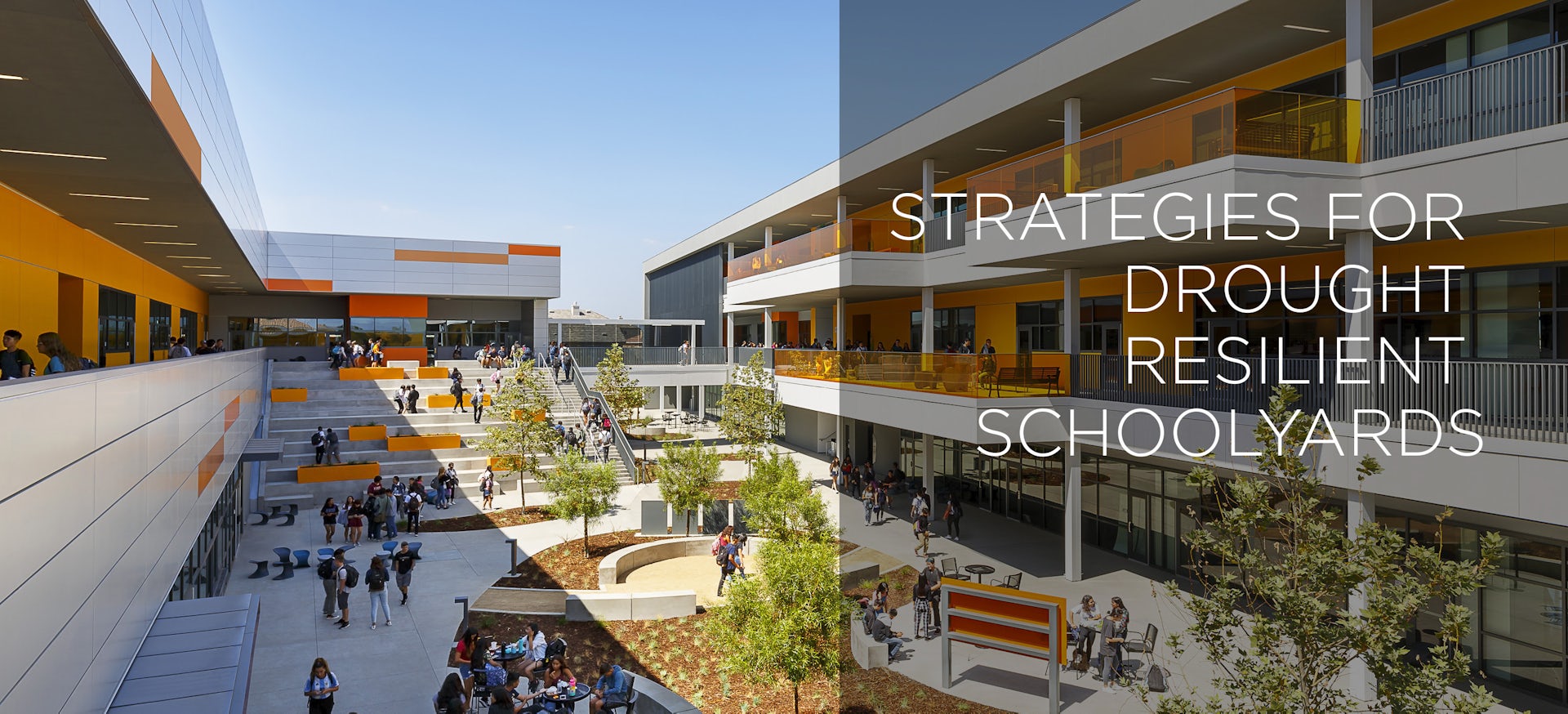Drought conditions throughout the Southwest are creating a tremendous opportunity to convert high-water-use K-12 campuses into drought-resilient schoolyards, LPA landscape architect Andrew Wickham said during a June 11 virtual presentation organized by the Los Angeles County Office of Education.
During his talk, titled “Strategies for Drought Resilient Schoolyards,” Wickham offered insight and suggestions to school district facility directors and maintenance department managers on the implications of mandatory water reductions and the potential to improve learning environments for students and staff. On campuses, landscape irrigation typically accounts for 40-60 percent of a school's water use, and can represent a significant portion of utility costs, he said during the presentation.
The climate crisis and drought situation could be a “blessing in disguise,” Wickham told the audience. The increase in water security issues is sparking a paradigm shift in the education system’s approach to outdoor spaces and the use of water, he said. “These shifts will build more value, function and educational opportunities into outdoor environments, while simultaneously reducing water demand, filtering stormwater, reducing student stress and creating a more well-rounded student body,” Wickham said.
Districts are increasingly looking for ways to create more water-efficient environments, as communities make water conservation a high priority. The days of outdoor spaces being an afterthought are over, Wickham said. “To address the needs of students and communities, we have to look at all opportunities to improve our outdoor spaces.”
The benefits of the drought resistant schoolyard go beyond aesthetics, including financial savings and the improved mental and physical health of students and staff. Native habitats help protect communities from extreme heat and create outdoor learning environments that are proven to benefit students in myriad ways.
The lack of natural outdoor spaces, especially on school campuses, is a public health issue, Wickham said.
“As cities become more and more urbanized, students lack safe access to outdoor spaces and the restorative effects of being outside,” he said. “Sunlight, fresh air, and natural surroundings positively affect a sense of well-being and happiness. Students don’t just look to school for an education, they look to it for play, joy and safety.”
A native habitat landscape can reduce stress, increase the ability to concentrate and boost academic achievement, Wickham said. Creation of pollinator, food and sensory gardens can add to the curriculum in many ways and provide an opportunity for teachers to talk about native plants, animals and insects. The act of planting can become part of the instruction.
School administrators can take several practical steps to improve the performance of their outdoor environments. Removal of turf grass and an audit of irrigation systems can have an immediate impact. Water management through plant selection, irrigation and design can have longer term benefits. Spaces can enhance the connection to nature and complement the student experience, while saving water and lowering operational costs.
“We, collectively, can create drought resistant spaces that add value to the students, the teachers and communities,” Wickham said.














